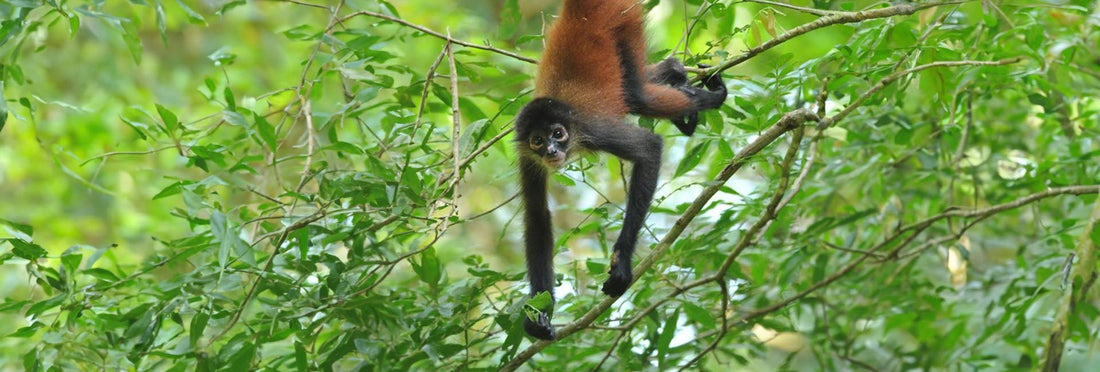
Discovering Costa Rica's Diverse Monkey Species: Habitats, Traits, and Conservation 🐒
Costa Rica, a treasure trove of biodiversity, is home to a variety of primate species, each with its unique traits and behaviors. Among these diverse and captivating primates are the Central American Spider Monkey, Red-backed Squirrel Monkey, Central American White-faced Capuchin Monkey, and the Mantled Howler Monkey.
1) Central American Spider Monkey (Ateles geoffroyi)
The Central American Spider Monkey, recognized by its long, slender limbs and prehensile tail, is an acrobatic primate found swinging through the dense forests of Costa Rica. With a black coat and a distinctive lack of a thumb, these monkeys navigate the treetops using their exceptional agility and strong social bonds. They have a primarily vegetarian diet, consuming fruits, leaves, flowers, and occasionally insects. Their intricate communication, which involves a range of vocalizations and gestures, plays a vital role in their social structure.

2) Red-backed Squirrel Monkey (Saimiri oerstedii)
The Red-backed Squirrel Monkey, one of Costa Rica's smallest primates, showcases a striking coat of reddish-brown fur and a white belly. Often found in large groups, these energetic and agile monkeys inhabit the tropical rainforests. Their diet consists mainly of fruits, flowers, insects, and small vertebrates. Known for their remarkable agility and quick movements, these monkeys are adept at leaping between branches and foraging for food while exhibiting complex social behaviors within their troops.

3) Central American White-faced Capuchin Monkey (Cebus imitator)
The Central American White-faced Capuchin Monkey, commonly known for its distinctive white facial markings and robust body, is an intelligent and adaptable primate species in Costa Rica. They exhibit remarkable problem-solving abilities and use tools to extract food, such as using sticks to catch insects or rocks to crack open nuts. These social monkeys live in groups and consume a varied diet that includes fruits, insects, small mammals, and even bird eggs. Their inquisitive nature and complex social interactions make them a fascinating subject for researchers and wildlife enthusiasts.

4) Mantled Howler Monkey (Alouatta palliata)
The Mantled Howler Monkey, named for its loud and distinctive howling calls that echo through the forest canopy, is a large and charismatic primate species in Costa Rica. Known for their long, prehensile tails and shaggy coats ranging from golden-brown to black, these monkeys predominantly feed on leaves, supplemented with fruits and occasional insects. They spend much of their time lounging in the treetops, forming cohesive social groups and maintaining strong family bonds. Their deep vocalizations serve as a means of communication across the forest and play a pivotal role in territorial defense and group cohesion.

Each of these monkey species contributes to the vibrant tapestry of Costa Rica's ecosystems. Their behaviors, social structures, and unique adaptations highlight the importance of preserving their habitats and fostering conservation efforts. Observing these captivating primates in their natural habitat provides a glimpse into the intricate and awe-inspiring world of Costa Rica's wildlife.
As stewards of these invaluable species, it is imperative to support initiatives aimed at protecting these primates and their habitats. Through conservation efforts and sustainable practices, Costa Rica can continue to thrive as a sanctuary for these remarkable monkeys, ensuring their existence for generations to come.
